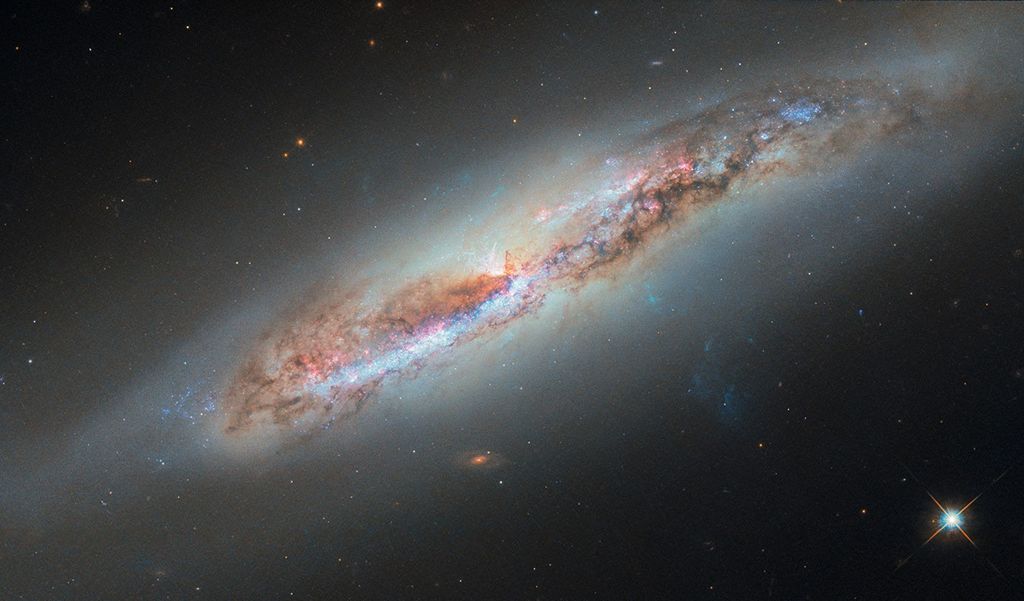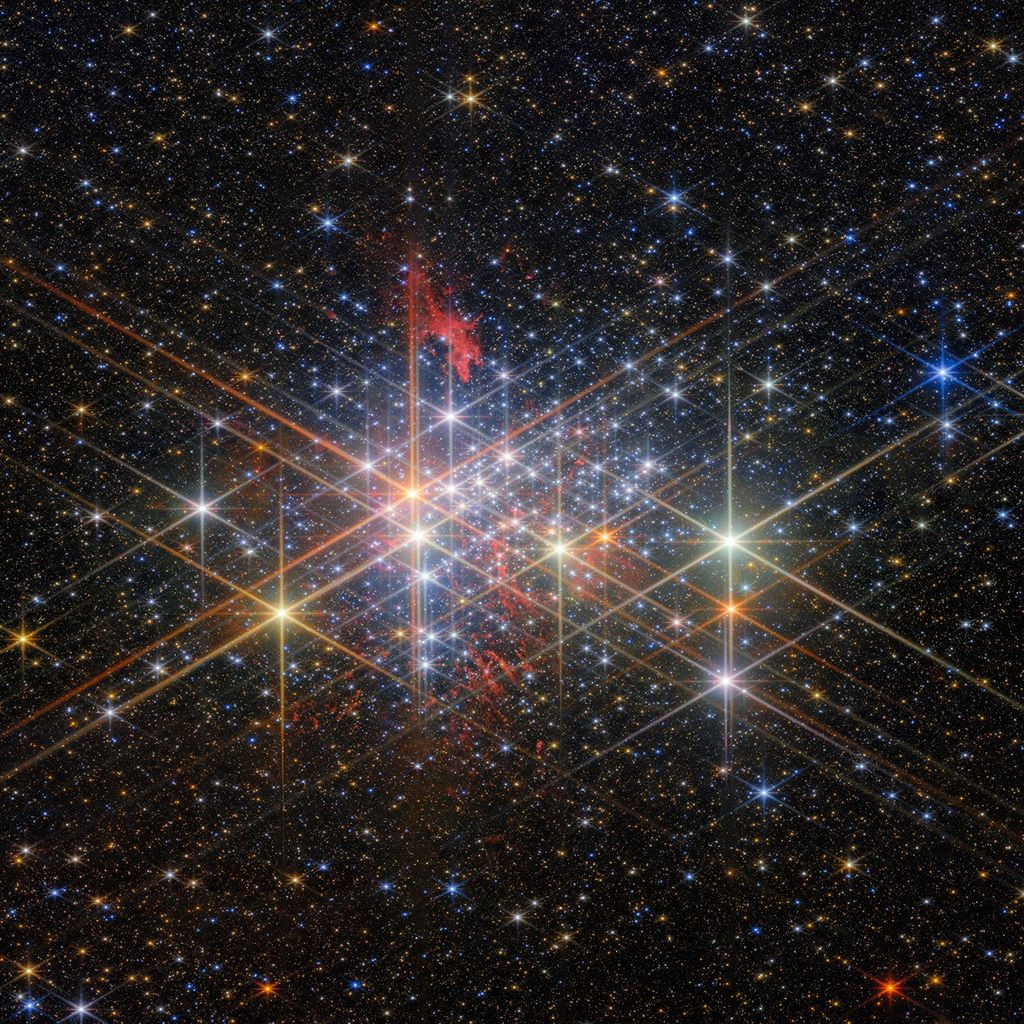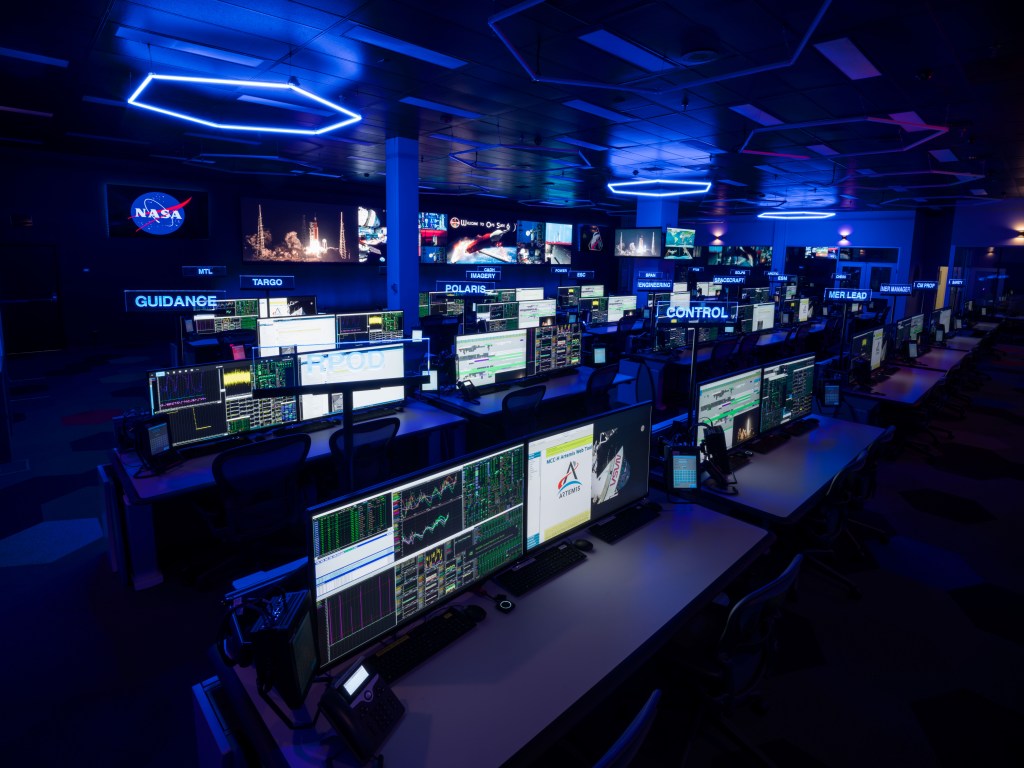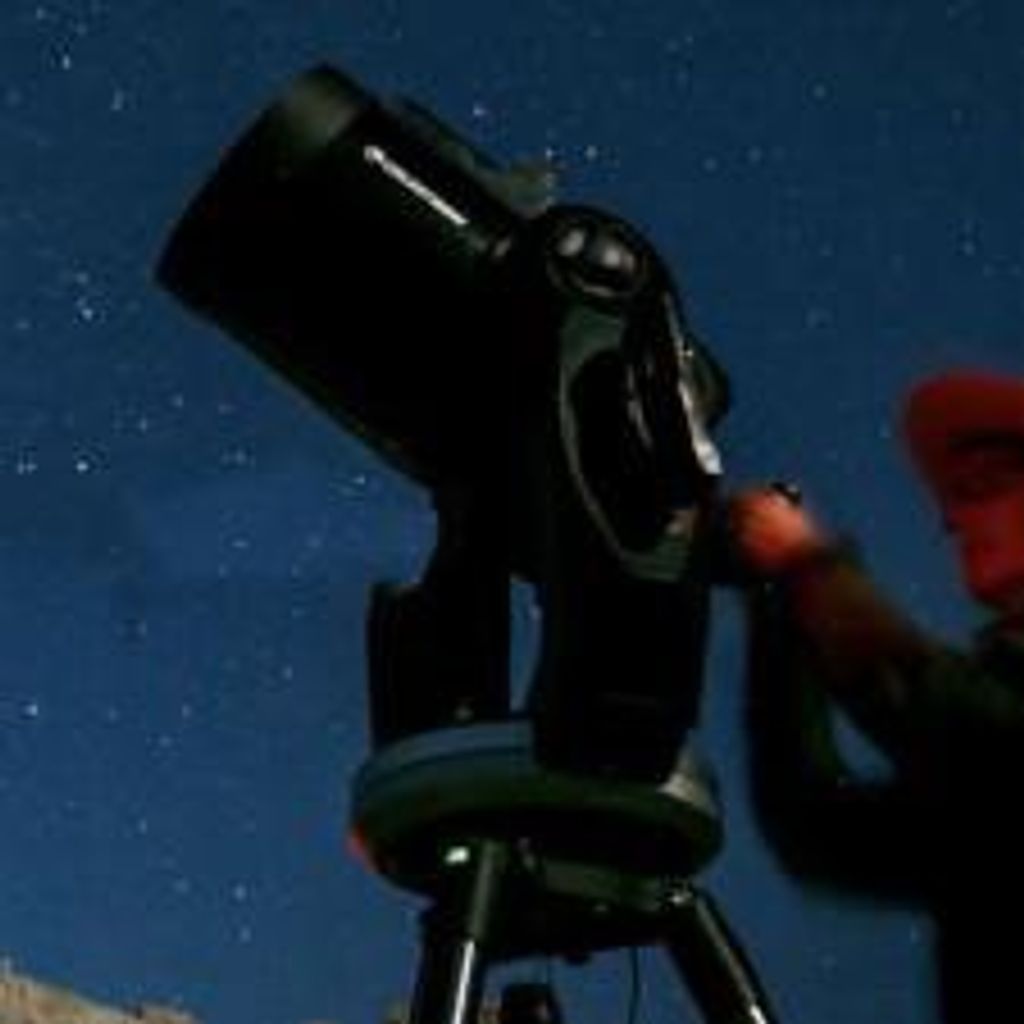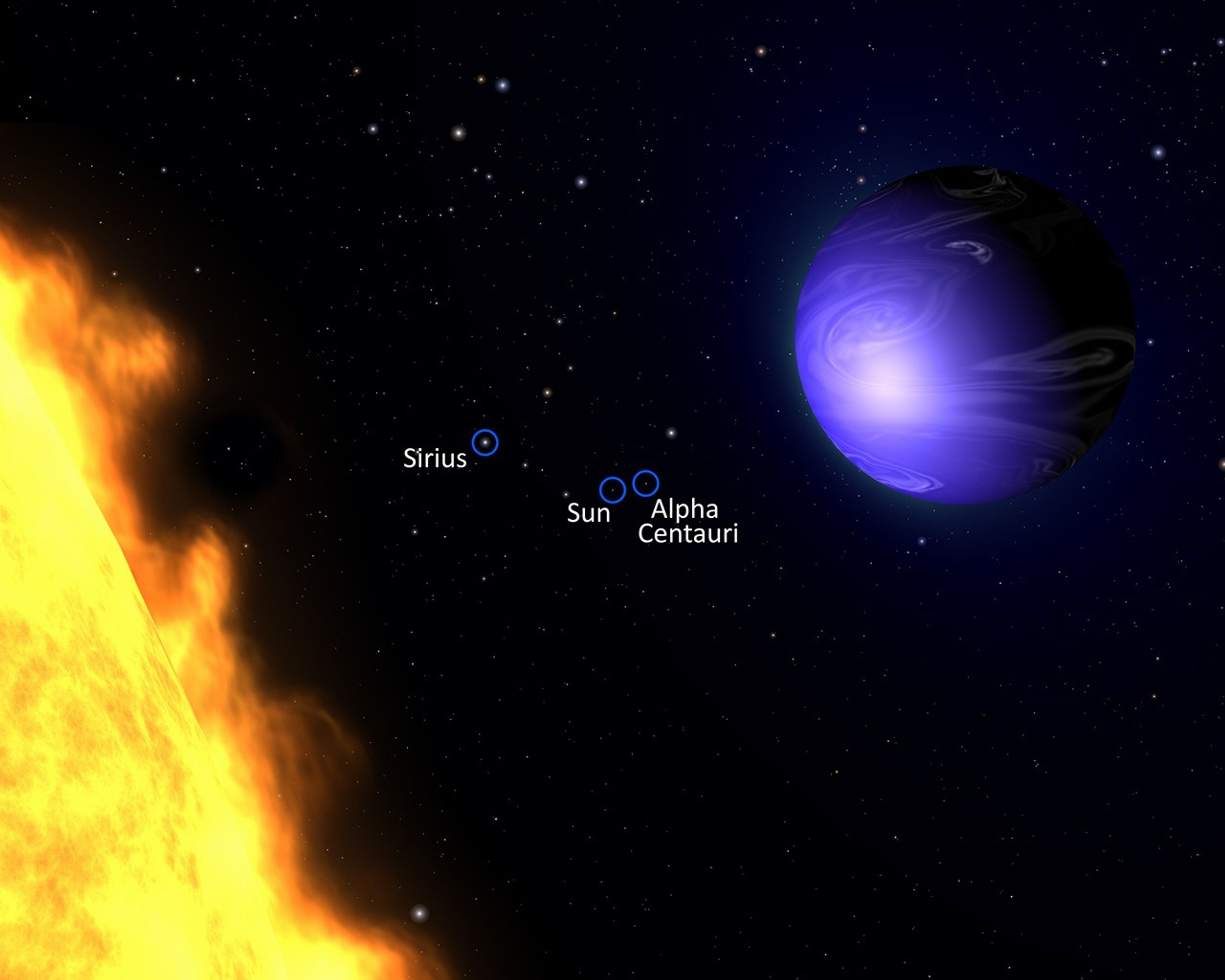1 min read
Visible-light Color of Planets Plot
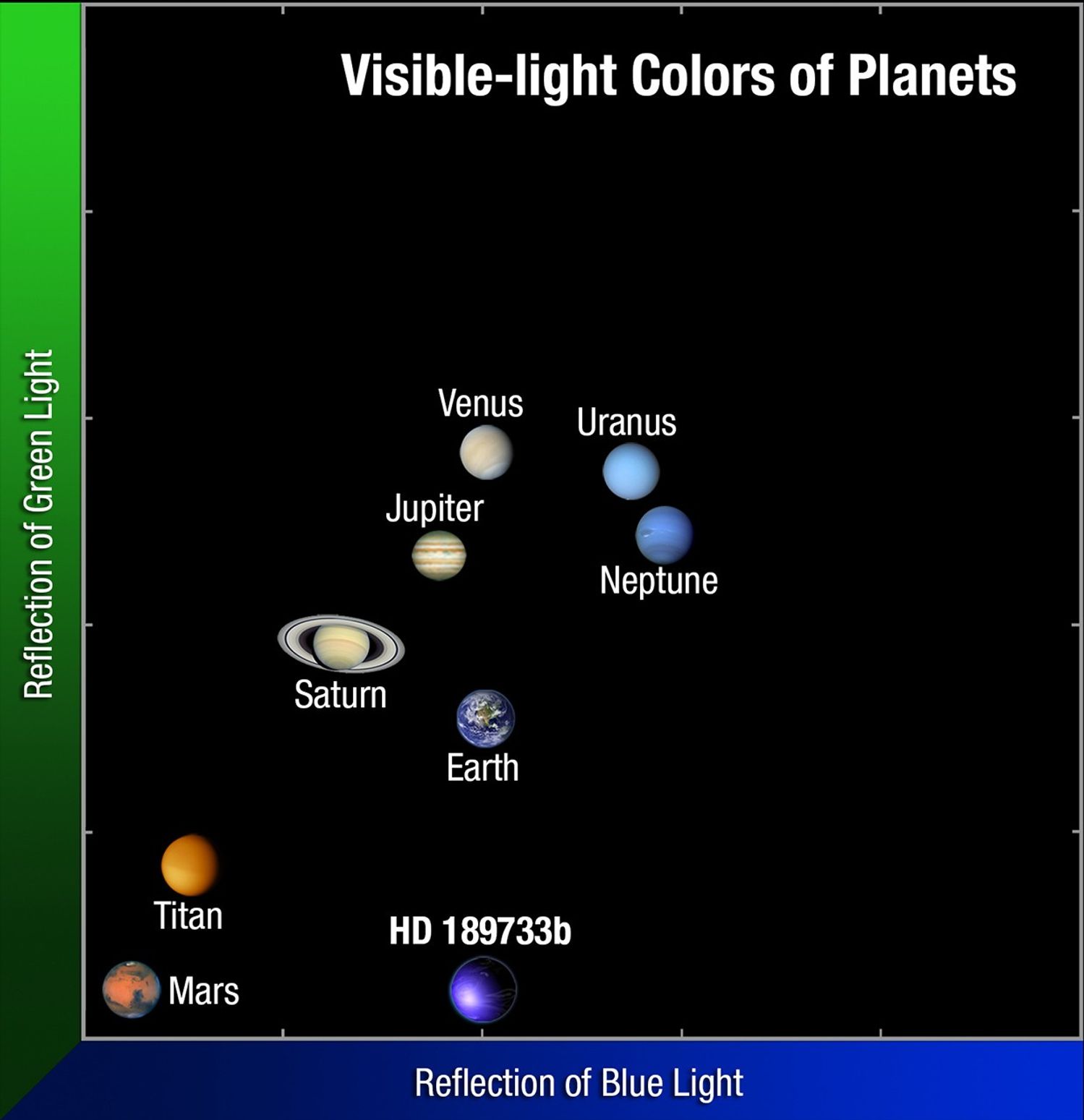
This plot compares the colors of solar system planets to the color of the hot-Jupiter-class planet HD 189733b. With the exception of Mars, the colors are primarily determined by the chemistry of the planets' atmospheres. Earth's blue atmosphere plus the blue tint of the oceans dominate our world's hue. HD 189733b's deep blue color is produced by silicate droplets, which scatter blue light in the 2,000-degree-Fahrenheit atmosphere.
- Release DateJuly 11, 2013
- Science ReleaseNASA’s Hubble Finds a True Blue Planet
- Credit
Related Images & Videos
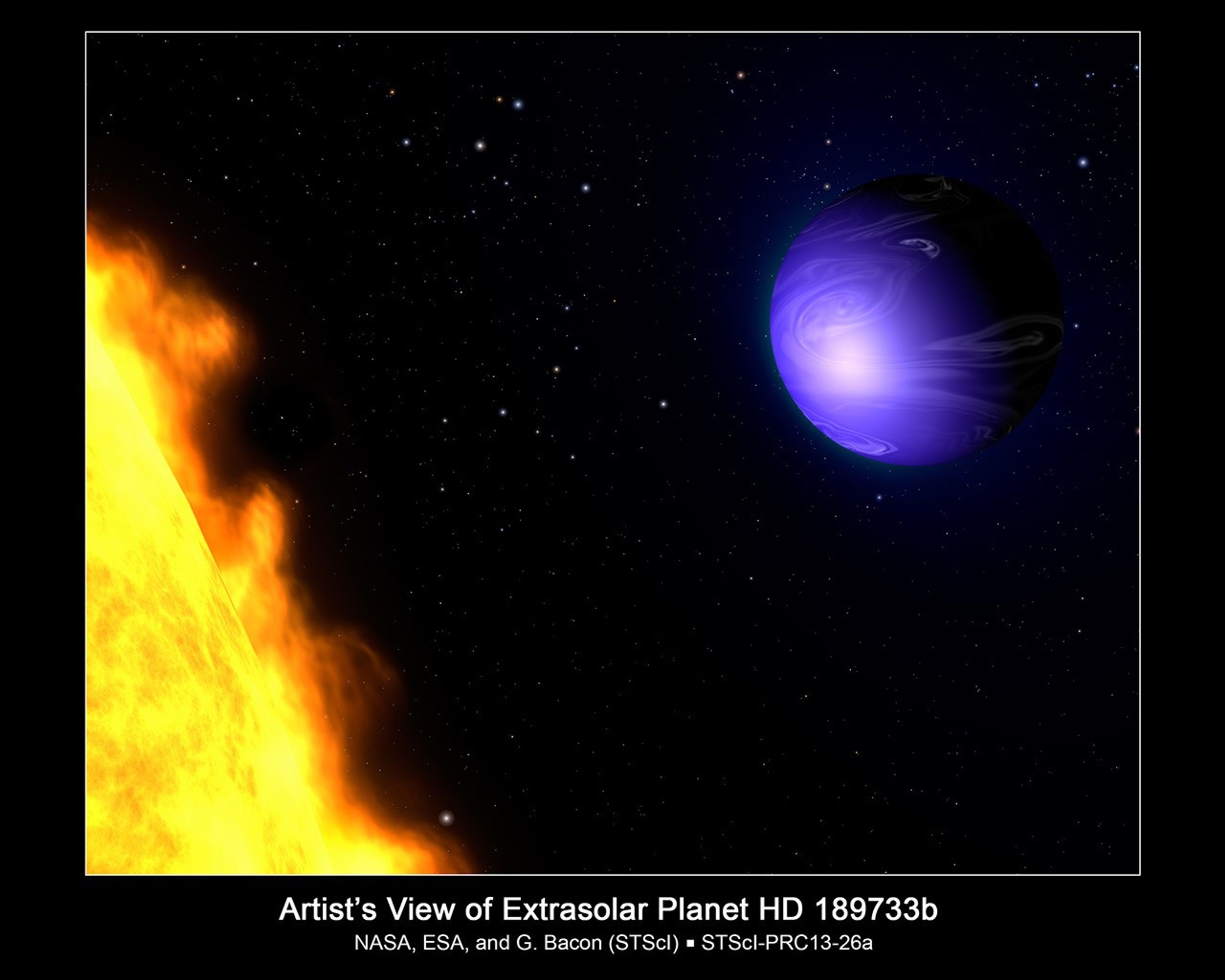
Artist's View of Extrasolar Planet HD 189733b
This illustration shows a hot-Jupiter-class planet orbiting its yellow-orange star, HD 189733. NASA's Hubble Space Telescope measured the actual visible-light color of the planet, which is deep blue. This color is not due to the presence of oceans, but is caused by the effects...
Share
Details
Last Updated
Aug 17, 2025
Contact
Media
Claire Andreoli
NASA’s Goddard Space Flight Center
Greenbelt, Maryland
claire.andreoli@nasa.gov

